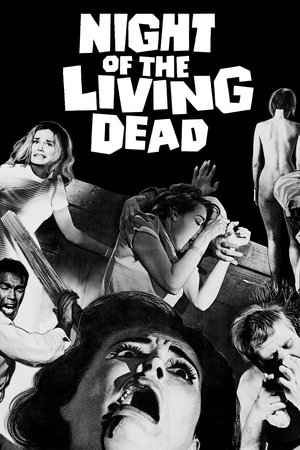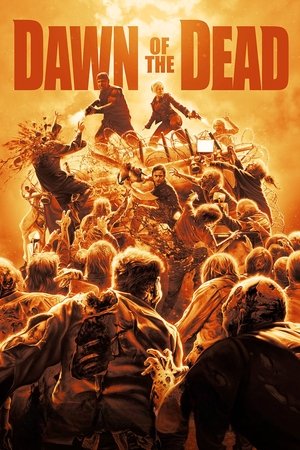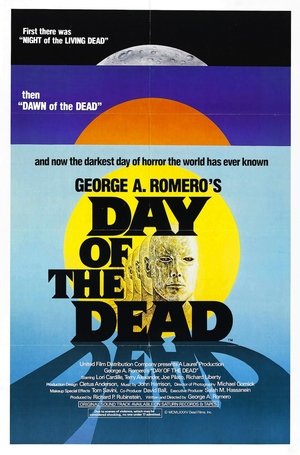The Knights, Fights and Motorbikes of George A. Romero’s ‘Knightriders’
Many of our favorite Masters of Horror actually found themselves being accidentally thrust into this position after an early genre success, with very few of them actively choosing to only tell scary stories. From Stephen King to John Carpenter, there are many such cases, but I think that one of the most curious examples of […]

Many of our favorite Masters of Horror actually found themselves being accidentally thrust into this position after an early genre success, with very few of them actively choosing to only tell scary stories. From Stephen King to John Carpenter, there are many such cases, but I think that one of the most curious examples of a renaissance man who found himself backed into a spooky corner is that of the legendary George A. Romero.
The father of the modern zombie movie, Romero was also a deeply passionate idealist and multitalented artist with ideas spanning multiple genres. And while most of his fans focus on success of his Living Dead films (and the occasional obscure gem like Martin), today I’d like to discuss the director’s most overlooked feature, 1981’s Knightriders – a film that I think will appeal to hardcore horror fans despite featuring almost none of Romero’s penchant for exaggerated blood and guts.
Originally envisioned as a more realistic retelling of the King Arthur story, Romero later revised his little passion project after working on a series of racing documentaries and meeting the Society for Creative Anachronism. Realizing that the ancient tales of honor and bravery that fascinated him in his youth were still being played out in modern times under different circumstances, the filmmaker soon found himself with an updated script about a dedicated group of performers facing the cruelty of life on the road.
In the finished film, which was released in April of 1981 alongside another Arthurian retelling (John Boorman’s Excalibur), we follow a travelling troupe of entertainers who engage in medieval jousts while riding motorcycles instead of horses. Led by the idealistic King William (Ed Harris), the anachronistic group deals with conflicts both internal and external as the real world begins to threaten their fantastical form of life.
SO WHY IS IT WORTH WATCHING?

If the bonkers premise isn’t enough to reel you in, rest assured that Romero’s poetic execution of ancient myth through a modern lens is also one hell of a fun ride. Even children are likely to enjoy the surface-level thrills of watching armor-clad bikers clashing in increasingly dangerous ways, but there’s also a deeper layer to the flick’s unique take on Arthurian legend. If you can look past the homemade helmets and maces, Romero is actually using this ridiculous setup to discuss some incredibly serious issues.
Taking inspiration from the works of T.H. White, Miguel de Cervantes and, more importantly, Dennis Hopper, Romero’s modern-day epic doesn’t just adapt age-old myths of quests and kingship – he actively comments on them. By populating Camelot with nomadic performers, the filmmaker compares the concept of an honorable kingdom with how modern artistic communities struggle to maintain their integrity in a world that fears true freedom.
From the flick’s deliberate use of multiracial casting in familiar mythical roles to moments where law enforcement attempt to profit off of folks who live in the margins of society, it’s easy to see that Romero was making a point about the kind of people and beliefs that are commonly persecuted in “modern” times. Hell, the movie even features positive representation of gay characters in ways that would make audiences accuse it of being excessively “woke” if it were released today.
Of course, Knightriders simply wouldn’t work without the career-defining performance of our first-time leading man, Ed Harris. Harris’ King William isn’t just a stand-in for King Arthur, he also represents Romero’s progressive ideals, with this stubborn hero constantly battling against “the dragon” of reality in an attempt to keep his dream of a free Camelot alive. The rest of the cast is also excellent, with the storytelling Pastor Brother Blue making for a fascinating Merlin and Tom Savini giving his all as a gender-swapped Morgan Le Fay, but Harris’ commanding demeanor is the glue that holds both the troupe and the story together.
Ultimately, what really makes the film worth watching is its unprecedented earnestness. Romero is clearly working through some personal issues in the film’s script, and I interpret the narrative as the filmmaker commenting on the reality of maintaining a career as an artist in 1980s Hollywood. Fortunately, the experience still works when removed from all metaphors and mythological allegories, though that’s mostly due to the fact that all the characters act like real, breathing people even when engaged in motor-jousting.
AND WHAT MAKES IT HORROR ADJACENT?

Knightriders is one of the least horror-adjacent films in George Romero’s filmography. And yet, as the old adage says, “you can remove the director from the genre, but you can’t remove the genre from the director.” That’s why the flick still features some of the same recurring themes as movies like Dawn of the Dead without providing us with any real gore or frights.
Not only does Romero take the Shakespearean conflict here seriously, with the troupe’s power struggles feeling raw and believable despite all the ren-faire armor and medieval monikers, but he also made an effort to depict jousting as a decidedly visceral sport. The movie’s action displays the same kind of brutal energy as George Miller’s early Mad Max films, and I’m honestly surprised that no stuntman was killed in the shooting of this picture, as some of the crashes here feel more painful than anything in the effects-heavy Dead movies.
There’s also the matter of the film’s memorable cast. Even casual viewers will spot cameos like that of Stephen and Tabitha King (who were on set to collaborate with Romero on the then-upcoming Creepshow), but dedicated horror hounds will also be surprised to spot genre veterans like Ken Foree and John Amplas – as well as the aforementioned Tom Savini – in a movie that doesn’t feature masked serial killers or man-eating mutants.
Knightriders may not rank among George Romero’s most popular productions, lacking the humorous flair of Creepshow and the apocalyptic dread of the Dead franchise, but I personally find it to be one of the director’s most accomplished films. An evergreen meditation on honor, leadership and life as an artist, as well as a surprisingly faithful adaptation of the Arthurian mythos, there’s nothing out there quite like this 1981 gem. That’s why I’d urge horror fans to check this oddball movie out despite its lack of zombies.
There’s no understating the importance of a balanced media diet, and since bloody and disgusting entertainment isn’t exclusive to the horror genre, we’ve come up with Horror Adjacent – a recurring column where we recommend non-horror movies that horror fans might enjoy.




